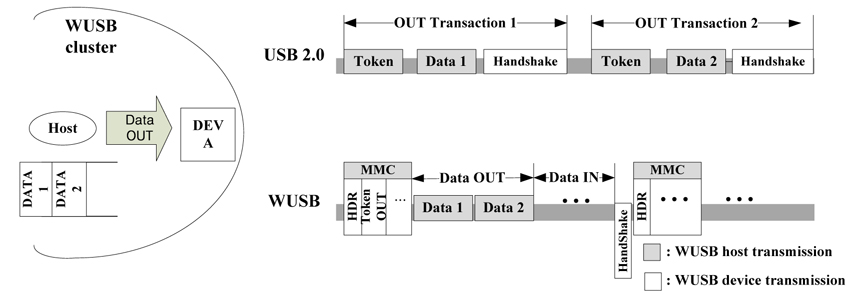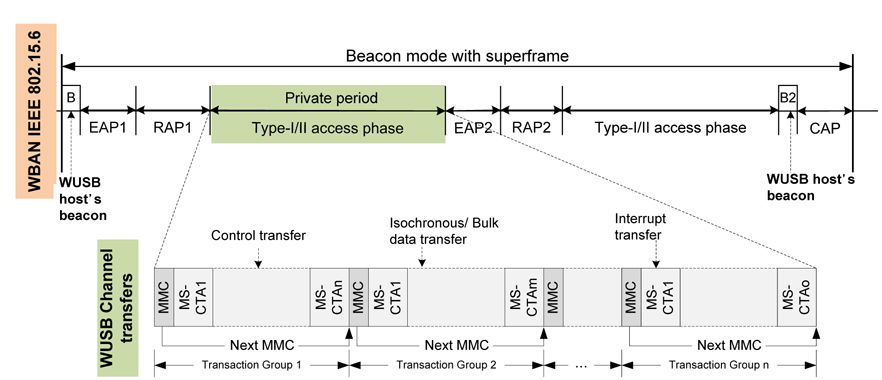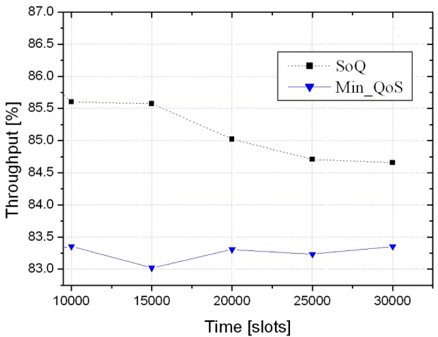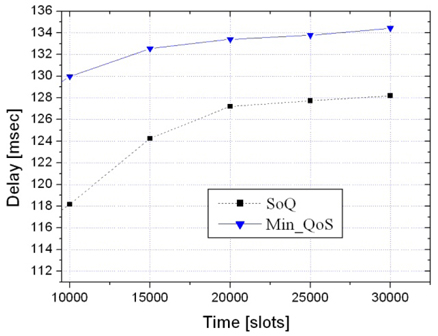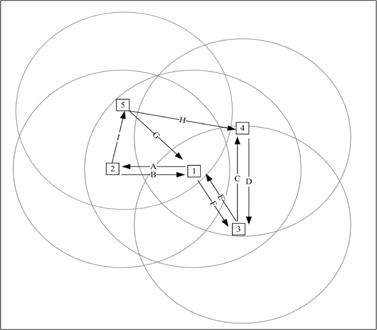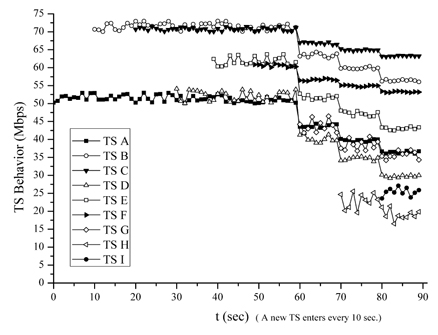



A recent major development in computer technology is the advent of wearable computer systems. Wearable computer systems employ a wireless universal serial bus (WUSB), which refers to a combination of USB with the WiMedia wireless technical specifications. In this study, we focus on an integrated system of WUSB over wireless body area networks (WBANs) for wireless wearable computer systems. However, current WBAN MACs do not have well-defined quality of service (QoS) mapping and resource allocation mechanisms to support multimedia streams with the requested QoS parameters. To solve this problem, we propose a novel QoS-aware time slot allocation method. The proposed method provides fair and adaptive QoS provisioning to isochronous streams according to current traffic loads and their requested QoS parameters by executing a QoS satisfaction algorithm at the WUSB/WBAN host. The simulation results show that the proposed method improves the efficiency of time slot utilization while maximizing QoS provisioning.
A recent major development in computer technology is the advent of wearable computer systems, which are based on human-centric interface technology trends and ubiquitous computing environments [1, 2]. Wearable computer systems use a wireless universal serial bus (WUSB), which refers to a combination of USB technology with the WiMedia physical layer and medium access control layer (PHY/MAC) technical specifications. WUSB can be applied to wireless personal area network (WPAN) applications, as well as wired USB applications such as PAN. WUSB specifications include high-speed connections between a WUSB host and WUSB devices for compatibility with USB 2.0 specifications [3, 4].
A wireless body area network (WBAN), which describes the application of wearable computing devices, allows for the integration of intelligent, miniaturized, low-power, and invasive/non-invasive sensor nodes that monitor body functions and the surroundings. Each intelligent node is adequately capable of processing information and forwarding it to a base station for diagnosis and prescription [5].
The WUSB channel is a continuous sequence of linked application-specific control packets called micro-scheduled management commands (MMCs). As shown in Fig. 1, WUSB maps the USB 2.0 transaction protocol onto the TDMA micro-scheduling feature. MMCs are used to advertise channel time allocations for enabling point-topoint data communications between the host and the endpoints of the devices in the WUSB cluster. As shown in Fig. 1, an MMC specifies the linked stream of the WUSB channel time allocation blocks up to the next MMC [3]. The information element (IE) fields in an MMC are called WUSB channel IEs, and they include device notification time slots (DNTS), protocol time slot allocations (device receive [DR], device transmit [DT]), and host information.
Fig. 2 shows the WUSB over WBAN architecture. Here, the IEEE 802.15.6 WBAN superframe begins with a beacon period in which the WBAN hub performing the WUSB host’s role sends a beacon. The data transmission period in each superframe is divided into the exclusive access phase 1 (EAP1), random access phase 1 (RAP1), Type-I/II access phase, EAP2, RAP2, Type-I/II access phase, and contention access phase (CAP) [5]. EAP1 and EAP2 are assigned through contention to data traffic with higher priorities. In contrast, RAP1, RAP2, and CAP are assigned through contention to data traffic with lower priorities. In the Type- I/II access phases, the WBAN hub reserves time slots without contention for WUSB data exchange transactions with its WUSB devices [3]. In this paper, we propose a QoS-aware time slot allocation method for the WUSB over WBAN protocol.
II. QoS-AWARE TIME SLOT ALLOCATION METHOD FOR WUSB OVER WBAN
A WUSB/WBAN host forms a beacon group around WUSB/WBAN slave devices, and this group consists of the WUSB/WBAN host and its one-hop neighbors. All devices in a beacon group can interfere with each other. Table 1 lists certain parameters of the proposed method.
A scheme for allocating time slots in the (
[Table 1.] Parameters of proposed method
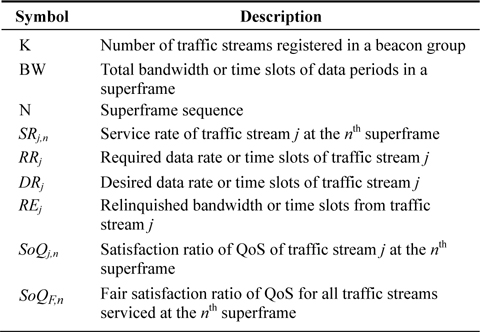
Parameters of proposed method
The SoQ value is smaller than or equal to 1. The closer the SoQ is to 1, the higher is the QoS satisfaction ratio of a TS. The proposed method provides fair SoQs (
Whenever the number of isochronous TSs or CATs varies, the WUSB/WBAN host calculates
If the calculated
>
A. Case of Single WUSB Traffic Characteristics
For the sake of simplicity, we assume that all TSs have the same QoS parameters (
In Figs. 3 and 4, the throughput and delay performances of a TS are compared. In both figures, the SoQ method yields better throughput than the Min_QoS method. Furthermore, the delay performance shows a trend similar to that of the throughput performance. In Fig. 3, the throughput (%) is given as the ratio of the service rate
>
B. Case of Multiple WUSB Traffic Characteristics
In this subsection, we simulate SoQ in a scenario comprising several TSs with different WUSB traffic characteristics. As shown in Fig. 5, there are five devices (DEV1 to 5) in the WBAN beacon group of DEV1; each arrow corresponds to a TS, and a circle around a device represents the communication range of this device. In the simulation results, nine TSs (A to I) are sequentially created, and they request guaranteed QoS to the WBAN MAC entity at 10-second intervals. Accordingly, each DEV allocates appropriate service rates to its TSs by using the SoQ. The
In this paper, we proposed a QoS-aware time slot allocation method. The proposed method provides fair and adaptive QoS provisioning to isochronous WUSB streams according to the current WUSB traffic loads and their requested QoS parameters by executing a QoS satisfaction algorithm at a WUSB/WBAN host. From the simulation results, it was shown that the proposed method improves the efficiency of time slot utilization while maximizing QoS provisioning. The proposed SoQ technique is compatible with the current IEEE 802.15.6 WBAN and WUSB standards.
